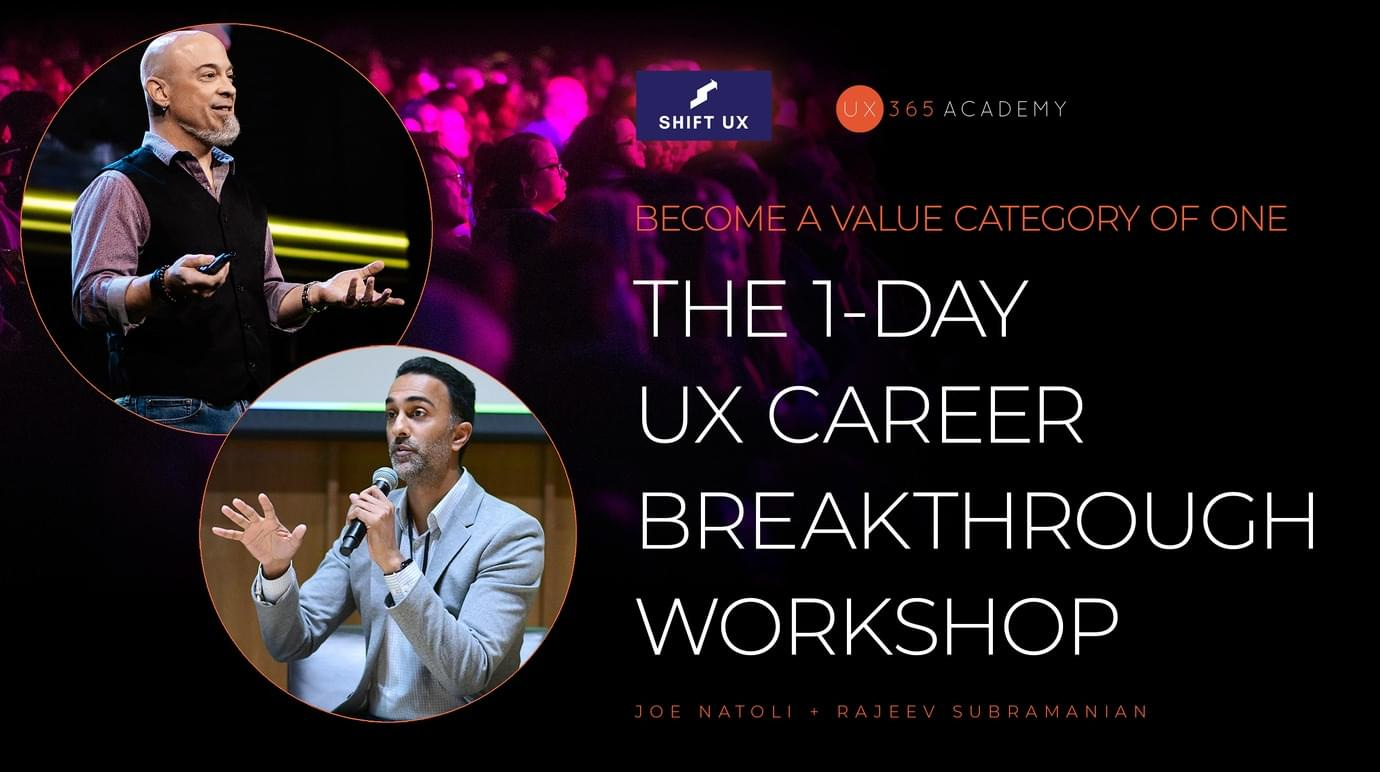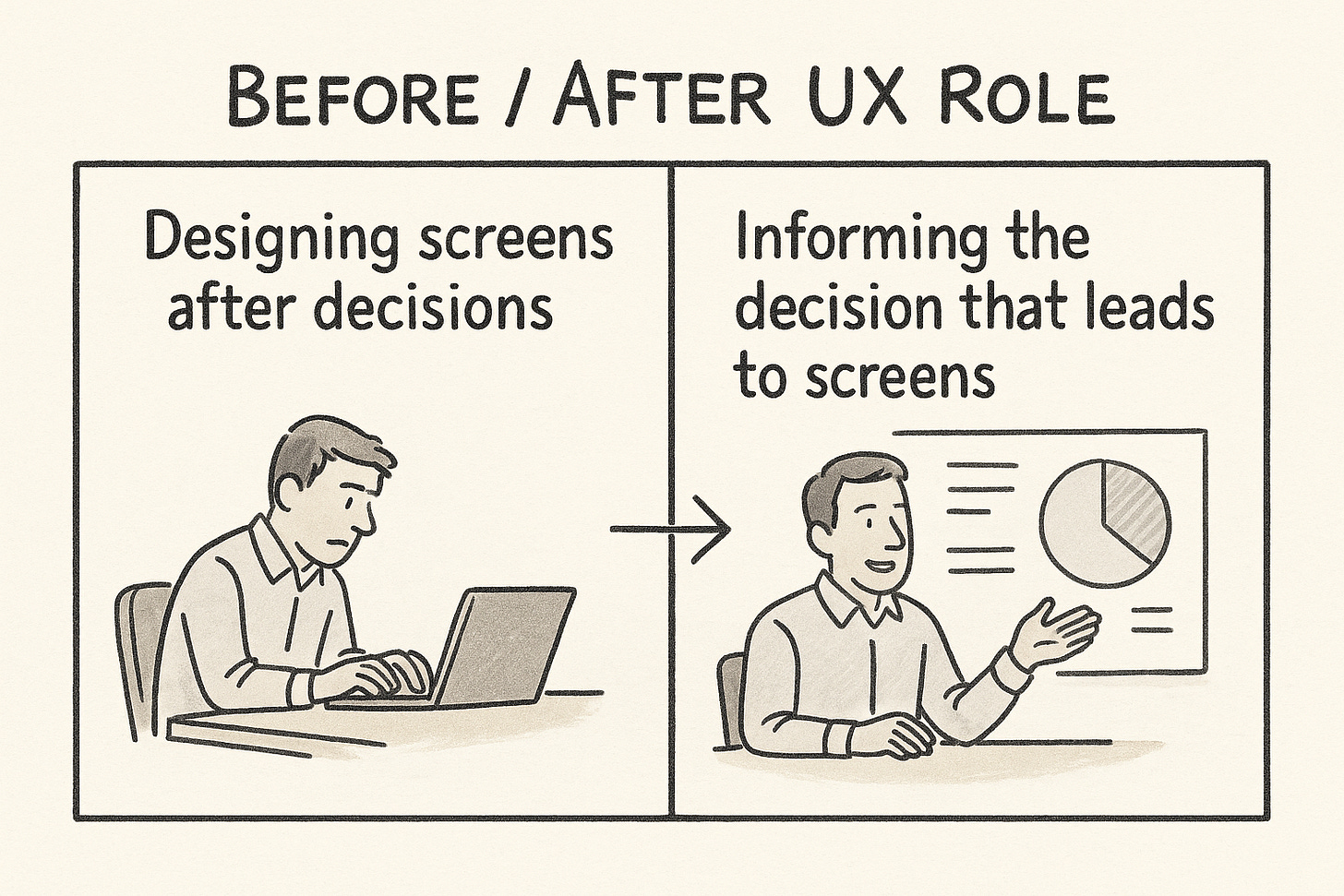How to Win Stakeholders: Translate UX Into Business Value
Signs you’re getting stakeholder traction
A good design solves a user problem.
A great design solves a business one, too.
But many UXers stop short of that second leap.
We write insights, make improvements, deliver clean interfaces…
Then we hear:
“Nice, but what does this do for us?”
Stakeholders don’t ignore UX because they don’t care.
They ignore it because we’re speaking the wrong language.
This is a short guide to making UX impossible to ignore by speaking in business terms that move decisions.
In This Issue
What stakeholders actually need to hear
Why UX explanations fall flat
Five ways to frame UX in business terms
A quick mapping exercise you can do with any UX deliverable
Signs you’re getting stakeholder traction
Resources
What stakeholders actually need to hear
They don’t need a deep dive on your usability test.
They don’t want a walkthrough of the prototype.
They want to know:
What’s at risk?
What are we leaving on the table?
How does this reduce cost or increase value?
What changes if we act - or if we don’t?
Stakeholders are tuned to outcomes.
Translate your UX story so it ends with theirs.
Why UX explanations fall flat
We focus on what we did, not what changed.
We show screens, not shifts.
We say “intuitive” when the business needs to hear “retained.”
We say “users were confused” when the CFO needs to hear “support costs increased.”
The gap is rarely in value.
It’s in translation.
Five ways to frame UX in business terms
1. Link insights to a metric
Not just “users were frustrated”
→ “Confusion led to more drop-offs on a high-value page.”
2. Name the trade-off
Not just “this version tested better”
→ “We chose clarity over feature density to reduce onboarding time.”
3. Use the stakeholder’s vocabulary
Say “acquisition,” “retention,” “lifetime value,” “support volume,” “conversion lift.”
Meet them in their world.
4. Quantify the upside (or downside)
Say “3 minutes saved per user”
→ “If 10K users hit this flow monthly, that’s 500 hours/month back in team capacity.”
5. Show the before and after
Not just pixels — the pain point, the shift, the impact.
Use clips, data, quotes, numbers. Make the difference real.
If you’re feeling stuck in your UX career… this is your moment to reset.
Join the 1-Day UX Career Breakthrough Workshop
📍 Live in Alexandria, VA | Nov 22 | Limited to 30 seats
Tired of hitting “Apply” and hearing nothing back? It’s not you — it’s the strategy.
In one action-packed day, UX veterans Joe Natoli and Rajeev Subramanian will help you rebuild your career system from the ground up.
✅ Rewrite your LinkedIn profile for real traction
✅ Build a recruiter-magnet personal brand
✅ Practice outreach + interview skills that actually work
✅ Leave with a 90-day game plan to land the right UX role
🎯 30 spots. One day. A career that works.
back to where we stopped….
Quick exercise: Translate one UX win
Take any recent UX win you were part of.
Now ask yourself:
What business problem was it connected to?
What changed as a result?
What metric, quote, or evidence shows the shift?
If you had to explain this to a head of product in 20 seconds, how would you frame it?
Write the “before” in one sentence.
Write the “after” in one sentence.
Then connect the dots in business terms.
This is the story your stakeholders are waiting for.
Signs you’re getting stakeholder traction
They ask you to present at roadmap or leadership meetings
Your work shows up in quarterly OKR reviews
People quote your insights even when you’re not in the room
You’re pulled into strategy discussions, not just design ones
Budget shows up without you begging for it
You’ll know it’s working when your name is attached to decisions — not just screens.
Resource Corner
The Making of a Manager — Julie Zhuo
Teresa Torres — Continuous Discovery Habits
Final Thought
You don’t need to become a businessperson.
You just need to connect your work to what business leaders care about.
UX doesn’t need more visibility.
It needs more resonance.
Start with one insight. Tell the story of what changed.
Then say what it’s worth. That’s how you win stakeholders.








